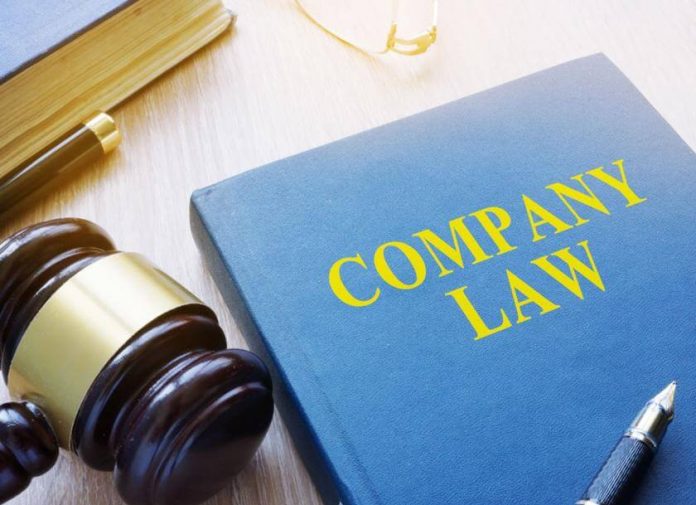

This article is written by J Jerusha Melanie, a law student at SRM School of Law, Tamil Nadu. This article provides a comprehensive overview of the concept of altering the clauses in the Memorandum of Association of a company. It also explains the connection between the doctrine of ultra vires and altering a Memorandum of Association.
It has been published by Rachit Garg.
Table of Contents
Like most citizens have identity cards (ID) that help them show who they are, the corporate identity of any company is represented by its Memorandum of Association. A Memorandum of Association reveals everything that a third party needs to know about a company.

At times, the company may have to alter the specifications of its Memorandum of Association. Defining the word ‘alter’ or ‘alteration’, Section 2(3) of the Act states that it includes the making of additions, omissions, and substitutions. For instance, when the company shifts its principal office to some other location, the Registered Office Clause of the company’s Memorandum of Association will have to be altered. Nevertheless, such alteration cannot be done without satisfying the steps mandated under the provisions of the Companies Act, 2013 (hereinafter referred to as ‘the Act’). In this article, we shall understand the process of altering the contents of a Memorandum of Association.
A Memorandum of Association is defined under Section 2(56) of the Act. It states that a memorandum means the memorandum of association of a company as originally framed or as altered from time to time in pursuance of any previous company law or of the Act.
As aforementioned, a Memorandum of Association is like the identity card of any company.
It is a document drafted before incorporating any company. It is a public document prepared by the promoters of the company. A Memorandum of Association is also called the ‘charter of the company’ and specifies the affiliation between the company and its shareholders or creditors. The entire structure of any company depends upon the Memorandum of Association. It marks the scope of a company’s operation. It means that the company must function only as per the provisions of its Memorandum of Association.
A Memorandum of Association essentially contains the powers and duties of the company towards its members, that is, the shareholders and creditors. If the company does anything beyond the limits permitted by the Memorandum of Association, it shall be held void as per the doctrine of ultra vires (which is discussed later in this article).
The following are the main purposes of a Memorandum of Association:
As per Section 4 of the Act, a Memorandum of Association shall contain the following clauses:

As the title suggests, a name clause specifies the name of the company. Under Section 4(1)(a) of the Act, the name of any public limited company must end with the word “limited”. Furthermore, in the case of a private limited company, the company’s name must end with the word ‘Private Limited’. However, the said Section exempts companies incorporated especially under Section 8 of the Act (for charitable objects) from such requirements.
Sections 4(2) to 4(5) of the Act mandate certain characteristics of any company’s name. It states that the name stated under the Name Clause of the Memorandum of Association must not:
Section 4 of the Act states that the Memorandum of Association of any company must specify the state in which the registered office of the company is to be situated. As per Section 12 of the Act, within 15 days of its incorporation, a company must specify the location of its registered office. Further, within 30 days of its incorporation, such a company must provide to the Registrar of Companies (ROC) the verification of its registered office.
Section 4(1)(c) of the Act mandates that the Memorandum of Association of any company must state the objects for which it is proposed to be incorporated. The object clause is arguably the most essential clause of a Memorandum of Association. It specifies the reason for which the company is incorporated. It states the business in which the company is involved. No company can operate beyond the scope enumerated in the Memorandum of Association.
Generally, the object clause contains three kinds of objects- main, ancillary, and other objects. The ancillary and other objects follow the main object of the company.

Under Section 4(1)(d) of the Act, the liability clause of the Memorandum of Association must state the liability of the company’s members. It means that the Memorandum of Association must specify whether their liability is:
If it is a company in which the members’ liability is limited by shares, then such liability will be limited to the unpaid amount of the shares held by them. In contrast, if their liability is limited by guarantee, then such liability will be limited to the amount up to which each of their members attests to subscribe.
The capital clause in a Memorandum of Association is one that specifies the company’s authorized capital. It states the total number of shares and the value of each share. Such an authorized capital is the maximum limit up to which a company can raise its capital. Section 4(1)(e) of the Act deals with the capital clause in a Memorandum of Association. It provides that the capital clause must state the share capital with which the company desires to be registered and the fixed amount and number of shares. Further, the said Section also mandates that no subscriber can subscribe to less than one share.
The subscription clause in a Memorandum of Association contains the list of the names of the first subscribers of the company. It states the number of shares held or the amount agreed to be contributed by each subscriber as the initial capital of the company. The Memorandum of Association is signed by all the subscribers.
The minimum number of subscribers for
There is no maximum limit on the number of subscribers.
Generally, the alteration of a company’s Memorandum of Association is allowed under the following circumstances:
As discussed above, a Memorandum of Association defines the relationship between the company and its members. The Memorandum of Association states the object of incorporating the company. It provides an overview of the company’s operations. As per the doctrine of ultra vires, the company is not supposed to bypass the boundary set by the Memorandum of Association on the company’s activities. If the company does any act outside its operational scope specified under the Memorandum of Association, such an act will be held ultra vires.
The term ‘ultra vires’ is Latin, and it means ‘beyond the powers.’ Such an ultra vires act shall be null and void. It cannot be ratified by the company’s Board of Directors (BoD). Similarly, any contract entered into by the company against the provisions of its Memorandum of Association shall be ultra vires and have no binding effect on the company. Nevertheless, the doctrine of ultra vires allows the company to do any act that may be incidental to its main object specified in its Memorandum of Association.
The doctrine of ultra vires was essentially brought forth to safeguard the interests of the members—that is, the shareholders and creditors of any company. The shareholders or creditors of the company invest in it by essentially considering its main objectives. They invest in a particular company, considering various factors like the market trends, the reputation of the company, etc., and expect to get a good profit out of it. They invest, thinking that their investment will be used only for the purposes about which they were already informed. They expect the company to be consistent with its objectives. So, the doctrine of ultra vires prevents the company from going beyond its permitted limits of operation. That is why altering the Memorandum of Association of any company follows a lengthy and complex process to ensure the company expands its scope of operation without being affected by the doctrine of ultra vires.
The following are the basic principles of the doctrine of ultra vires as derived through the course of various case laws.
Let’s know more about the connection between the doctrine of ultra vires and the alteration of a Memorandum of Association through a few landmark case laws.
One of the landmark cases on the doctrine of ultra vires in company law is Ashbury Railway Carriage and Iron Company Ltd. v. Riche (1875). In this case, the object clause of the Ashbury Co. provided the following as its objects:
Ashbury Co. entered into a contract with the defendant company, Riche, to construct a railway line in Belgium. Though the contract was initially ratified by the members of Ashbury Co., it was later repudiated by it. The defendant sued Ashbury Co. for breach of contract. In the end, the Court held that the contract was beyond the objects specified in the Ashbury Co.’s Memorandum of Association, and so it was held void. The Court held that the phrase “to make, sell, lend, or hire railway carriages and wagons, and all kinds of railway plant” did not mean the company could build an actual railway line. Ultimately, the contract was held to be ultra vires.
In this landmark case, a company that carried out the business of manufacturing chemicals. The object clause in the company’s Memorandum of Association permitted it to do anything that may be incidental to accomplishing its business. Further, the Memorandum of Association allowed the company to provide funds to any English university for the advancement of science and research. Such an allowance was challenged in court. The challenge was based on the contention that it was not a part of the main object stated in the Memorandum of Association.
Nevertheless, the Court acknowledged that funding for such activities was connected to carrying out the company’s future operations. The fund was needed to train the prospective students who may be easily recruited into the company. Such an act was held to be incidental to the main object and hence valid.
Below are the steps required to be followed to bring forth any alteration in a Memorandum of Association.
The first step to altering any clause of a Memorandum of Association is to convey to the Board of Directors (BoD) the proposal to make such an alteration. As mandated by Section 173 of the Act, the BoD must be intimated through a notice at least seven days prior to the actual board meeting.
The notice must be accompanied by the details of the proposed alteration and a draft of the resolution.
The second step in altering the Memorandum of Association involves the holding of the board meeting. The meeting witnesses the discussion of the need, pros and cons of the proposed alteration. Finally, if the BoD agrees to carry out such an alteration, the date, venue, and time for holding the general meeting are decided. Further, a director or someone else is authorized to furnish a notice to all the members of the company to participate in the general meeting.
Next, the notice of the general meeting is sent to all the directors, members, and auditors of the company. As per Section 101 of the Act, the notice should be sent at least twenty-one days before the date of the actual general meeting. The notice may be sent either via electronic or physical means. The notice should specify the exact date, time, and place of the proposed meeting. Furthermore, it should contain a brief note of the business that is proposed to take place at the meeting.

Firstly, on the day of the general meeting, the quorum for the meeting is checked. The quorum for a private company is a minimum of two (personally present.) In the case of a public company, the quorum is a minimum of five; however, it changes according to the number of members present in the meeting under Section 103 of the Act.
Secondly, the presence of the auditor of the company is checked. In case he/ she is absent, a leave of absence may be granted.
Finally, the proposed special resolution for altering the Memorandum of Association has been passed. A special resolution is said to be passed when it is favourably voted by at least three times the number of votes cast against it. The votes can be cast either in person, through a postal ballot, or by proxy.
After passing the required resolution, various applications have to be filed with the RoC within 30 days from the date of passing the resolution. The applications vary from one clause to another, as discussed below.
Section 13 of the Act deals with the alteration of the Memorandum of Association. The said Section states provisions for altering every type of clause of the Memorandum of Association, as discussed below. Please note that the steps discussed in the above-mentioned subheading are mandatory for making any change in the Memorandum of Association of a company; such a procedure has to be fulfilled no matter which clause’s alteration is proposed. Nevertheless, the following provisions need to be followed with regard to the respective clauses of a Memorandum of Association.
All the forms mentioned below are available on the MCA portal.
Sections 4, 13(2), 13(3), and 16 of the Act provide for the alteration in the Name Clause of a Memorandum of Association. A company that has passed a special resolution for the purpose can change its name by filing an application (Form INC 24) in the Reserve Unique Name (RUN) web portal service approved by the Ministry of Corporate Affairs (MCA). The RUN service can be availed only after log-in into the MCA portal.
The MCA takes 2-3 days to approve the newly proposed name. It will send the name approval letter if the name is in accordance with Sections 4(2) to 4(5) of the Act. Under Section 13(2) of the Act, any change in a company’s name shall take effect only after it is expressly approved by the Central Government. Nevertheless, such approval is unnecessary in case the change is simply the addition or deletion of the word ‘Private’ when the company gets converted from one class of company to another.
Once the name of the company is altered, the RoC will replace the old name with the newly altered name in the register of companies. After registering it, the RoC will issue a new certificate of incorporation with the altered name printed on it. The issue of the fresh certificate of incorporation marks the end of the company’s name change.
Sections 12(4), 12(5), 13(4), 13(5), and 13(7) of the Act give the provisions as to the change in the registered office clause of a Memorandum of Association. For altering the registered office clause in case the registered office is to be shifted within the local limits of the same city, after passing a special resolution for the purpose, the company can file an application (Form INC 22) with the RoC.
In case the company wishes to shift the registered office from one city to another within the jurisdiction of the same RoC, it should file e-Form MGT-14 and INC-22 within 30 days of passing a special resolution.
To shift its registered office from the jurisdiction of one RoC to another within the same state, the company can file e-Form MGT-14 within 30 days of passing a special resolution. Furthermore, it should file INC- 23 with the Regional Director, who may issue an order approving the change in registered office. Then, INC-28 should be filed by the company within 60 days of the RD’s order. Lastly, within 30 days of getting the approval under INC-28, the company should file INC 22.
In the event a company wishes to shift its registered office from one state to another, it should file an application (Form MGT 14) within 30 days of passing a special resolution in this regard. Then, the company must file Form GNL 2, followed by INC 26 for advertising the proposed change in newspapers in vernacular language and English. Then, INC 23 is to be filed to get the approval of the RD; the RD’s approval order should then be filed with the RoCs of the respective states from and to where the change in the registered office is proposed. Finally, the approval of both the RoCs must be filed as INC 22 within 30 days.
Under Section 13(9) of the Act, the Object Clause in the Memorandum of Association of any company can be altered by passing a special resolution in this regard. The said Section provides that any company that wishes to alter its Object Clause must pass a special resolution and get it approved by the RoC within 30 days of passing the resolution. For that, the company should file Form MGT 14, following which the RoC shall register such a proposed change and issue a certificate thereof.
Sections 13 and 61 deal with the alteration of the share capital clause in a Memorandum of Association, provided the company’s Article of Association (AOA) permits it. Such an alteration may include the following;
The alteration of the Share Capital Clause of a company requires the passing of an ordinary resolution at a general meeting in that regard. Within 30 days from passing the resolution, Form MGT 14 must be filed with the RoC, who shall then register the change in the Register of Companies.
The Liability Clause in a Memorandum of Association can be altered by passing a special resolution in this regard. Within 30 days of passing the resolution, the company must file an application (Form MGT 14) with the RoC.
The Subscription Clause in the Memorandum of Association cannot be altered throughout the life of the company.
Generally, to alter any clause in a Memorandum of Association, the following documents are required to be sent along with the application filed under Section 13 of the Act;
As discussed in this article, the alteration of a Memorandum of Association involves a complex process. The process witnesses lengthy discussions and brainstorming to ensure that the company’s growth is ensured without hurting the interests of the members. Section 13 of the Act provides flexibility to alter the contents of a Memorandum of Association; at the same time, restricts the company from doing major changes in the business without the members’ express consent. The doctrine of ultra vires plays an intrinsic role in balancing the interests of both the company and the investors.
A Memorandum of Association is one of the most important documents that every member of the company must go through before investing in it. It decides the prospective relationship between them and the company. Hence, it is always advised to thoroughly read it before investing in any company.
Yes. A Memorandum of Association can be altered under Section 13 of the Companies Act, 2013.
One can download the forms required to complete the process of altering a Memorandum of Association from the web portal of MCA. All the downloadable forms are provided in the ‘Company Forms Download’ section of the portal.
No. The subscription clause of a Memorandum of Association cannot be altered throughout the span of the company.
No, the liability clause of a Memorandum of Association cannot be altered so as to make it unlimited.
Memorandum of Association stands for Memorandum of Association, while AOA stands for Articles of Association. A Memorandum of Association defines the relationship between the company and its members, while an AOA defines the functioning of a company.
Students of Lawsikho courses regularly produce writing assignments and work on practical exercises as a part of their coursework and develop themselves in real-life practical skills.
LawSikho has created a telegram group for exchanging legal knowledge, referrals, and various opportunities. You can click on this link and join:
Follow us on Instagram and subscribe to our YouTube channel for more amazing legal content.
